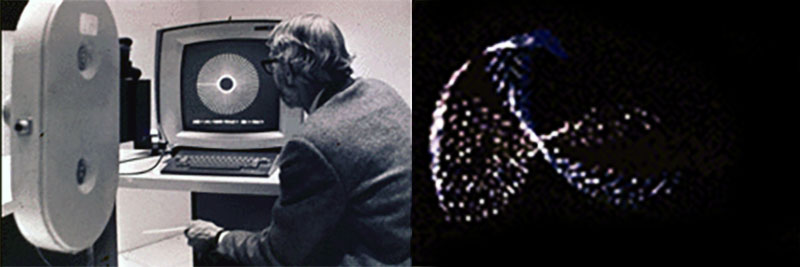John Whitney

John Whitney's set-up for filming computer animation from a monitor screen during an artist residency at IBM Labs in the 1960s.. Right: From sequences of Spirals, a piece of visual music created by Whitney on a computer program he designed in the late 1980s.
John Whitney (1917–1995) was an American animator, composer, and pioneer in computer-generated art and animation. He is considered one of the fathers of computer graphics.
Whitney was born in Pasadena, California in 1917. He was the brother of experimental filmmaker James Whitney. John Whitney studied art, music, and photography at Pomona College in the 1930s-40s. He later worked at Technicolor developing motion picture title sequences.
In 1960, Whitney established Motion Graphics Inc. to produce abstract animations using analog computers. In 1966, Whitney created his landmark film Catalog which consisted entirely of computer-generated graphic patterns and tones. He synchronized this animation with a musical score. Whitney continued experimenting with innovative motion graphics generated entirely from code throughout the 1960s-70s.
Whitney's early abstract films demonstrated new artistic potentials for computer programming and visualization. His works explored mathematical patterns through motion, pioneering algorithmic and generative art through the use of computers long before the advent of digital art tools. Whitney was among the very first artists to visualize and compose art entirely through code.
John Whitney's abstract animations had a major influence on computer graphics, visual music, and motion graphics. His early adoption of programming as an artistic medium helped establish the foundations of digital art. Whitney's work proved the creative possibilities in marrying art, technology, and mathematics. He inspired future generations of digital artists, animators, and hackers.
See also: